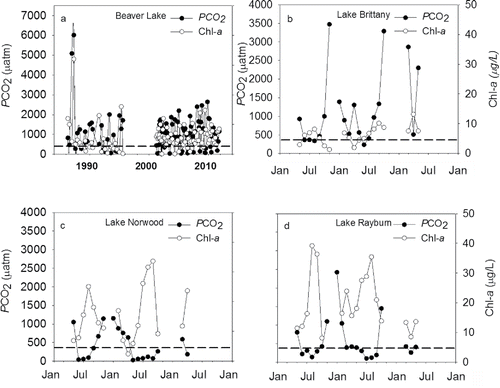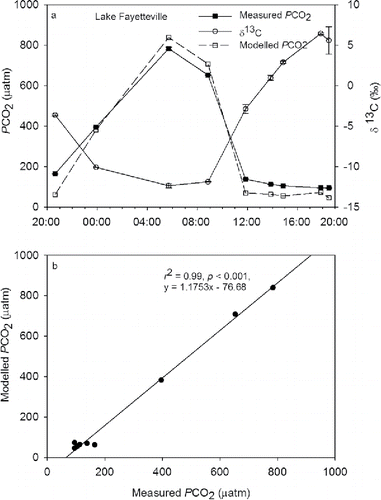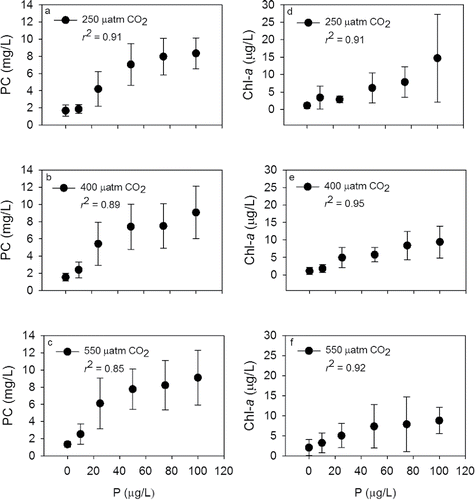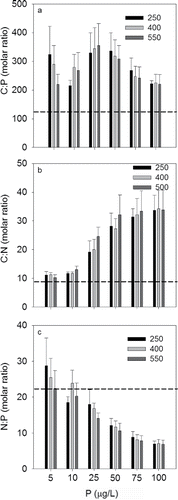Figures & data
Table 1. Select reservoir characteristics for Beaver Lake and Lakes Brittany, Norwood, Rayburn, and Fayetteville. Data from Ben Thompson's master's thesis and Bryant Baker's master's thesis, and from the Arkansas Department of Environmental Quality.
Figure 1. Reconstructed carbon dioxide partial pressures (PCO2) for (a) Beaver Lake (1966–2010) and Lakes (b) Brittany, (c) Norwood, and (d) Rayburn (2011 and 2012). Note the different scale on (a). The dotted line represents the current global PCO2 level.

Figure 2. Reconstruction of carbon dioxide partial pressures (PCO2) during June, July, and August in (a–c) 2011 and (d–f) 2012 at Beaver Lake, northwest Arkansas. The dotted line represents the current global PCO2 level.

Table 2. Summary of CO2 partial pressure (PCO2) for 22 June, 22 July, and 22 August 2011 and 2012.
Figure 3. Changes in δ13C and measured PCO2 over (a) a 24-hour period at Lake Fayetteville, northwest Arkansas, and (b) relationship between modeled and measured PCO2 for Lake Fayetteville, northwest Arkansas. The dotted line represents the current atmospheric PCO2 level.

Figure 4. The relationship between chlorophyll a (Chl-a) and particulate carbon (PC) at (a) 250 µatm, (b) 400 µatm, and (c) 550 µatm.

Figure 5. Algal biomass response reported as (a, b, and c) particulate carbon (PC) and (d, e, and f) chlorophyll-a to different levels of PCO2 along a phosphorus concentration gradient. The r2 values represent the linear fit with P concentration as the x-variable.

Table 3. Pairwise comparison of phosphorus treatment and corresponding p-values for particulate carbon (PC), chlorophyll a (Chl-a) and carbon to phosphorus (C:P), carbon to nitrogen (C:N), and nitrogen to phosphorus (N:P) ratios. Results were from a 2-way ANOVA, but there were no significant differences in PCO2, so only P treatment values are shown. Values <0.05 represent significant differences.

